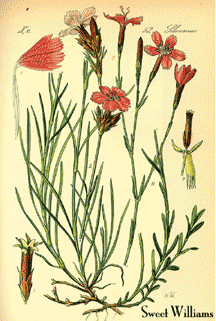|
|||||||||
Spring Has Sprung, But Don’t Jump the GunWays to safely scratch your early-season gardening itch
A few summer-like days in April may tempt inexperienced gardeners eager to purchase bedding plants and start planting the garden. But a late frost is unpredictable and deadly on succulent annuals. This desire to plant as soon as the weather warms has encouraged garden centers to stock early supplies of colorful bedding plants to satisfy those early birds. Novice early bird customers will be back in a month to purchase more plants, because late frosts killed their first planting. A few sympathetic garden centers offer consolation in partial refunds. If you have the urge to plant the garden as soon as we get a few warm days in spring, you can start buying and planting pansies, sweet Williams and hardy perennials. These plants are naturally cold-hardy and can tolerate being chilled. Incorporating perennials into the flower garden will not only provide greater variety, but they will also reduce your yearly planting bill because they return year after year. You can also scratch the gardening itch by digging, dividing and sharing perennials with friends and neighbors. Spring is the best time to cut back dead tops of plants and spread compost throughout the garden. Those perennials growing in your garden will serve as a biological clock as to when it is safe for planting annuals and for sowing seeds. Most perennials do not start active growth and begin to produce leaves until the soil warms adequately. Once you observe succulent stems and leaves, you can safely assume that safe planting time for annuals has arrived. Watch your perennials for clues about planting time, and do not base your decision to plant annuals on your friends’ or relatives’ perennial garden, which may be miles from your home. Mother Nature and man create micro-climates. A slope facing south or west is more likely to have late frost damage than a slope facing north. Also, the exterior walls of a stone or brick house hold more heat, thus stimulating early growth. A low-lying area is more likely to have late frost problems than a hilltop where there is good air drainage. Likewise, being near a large body of water means more late frost protection than near open fields. Just because we have a few warm days in April doesn’t mean that summer has arrived. Save yourself time and effort by waiting until the danger of frost has passed. Ask Dr. Gouin your questions at [email protected]. All questions will appear in Bay Weekly. Please include your name and address. |
|||||||||
|
|||||||||
|
|
|||||||||
|
© COPYRIGHT 2008 by New Bay Enterprises, Inc. All rights reserved.
|
|||||||||
 Volume 16, Issue 13 - March 27 - April 2, 2008
Volume 16, Issue 13 - March 27 - April 2, 2008
